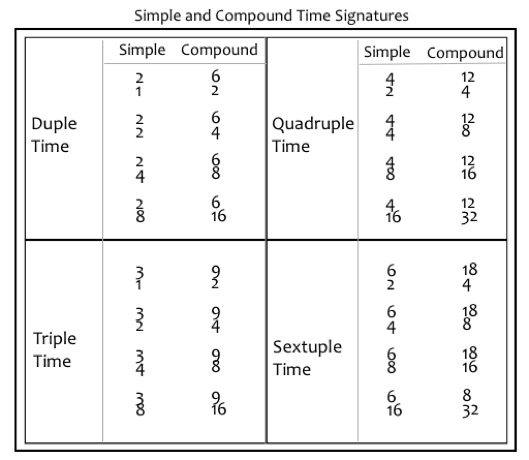Notation
Skills




















Below is an excerpt from Mark McGrain’s Music Notation - Theory and Technique for Music Notation. McGrain lists as wide a variety of time signatures as you can imagine, and we see that there are several ways of classifying time signatures.
If you haven’t read the Basics section on Time Signatures, then you should check it quickly for any content you may not know.

SIMPLE time signatures are those that can have their pulse be divided by two.
It helps to keep in mind the Imaginary Barline concept from Barring.
Duple = 2 pulses
Triple = 3 pulses
Quadruple = 4 pulses
Sextuple = 6 pulses

COMPOUND time signatures are those that can have their pulse be divided by three.

Below is the time signature symbol known as cut time, which refers to 2/2. It’s meaning can differ from what context it’s used in, but if it comes after a 4/4 section, it means the pulses should be interpreted differently from before.
=
